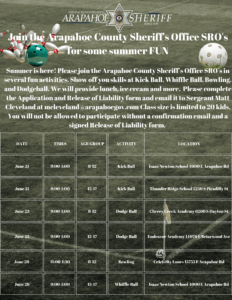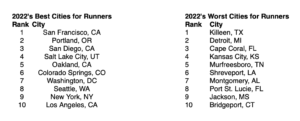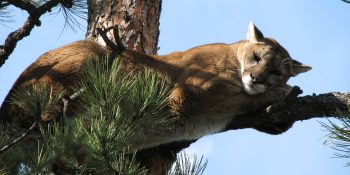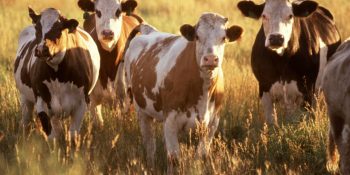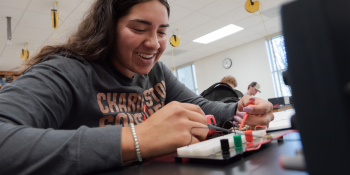Colorado State University’s Sustainable Livestock Systems Collaborative has hired its first director: Kim Stackhouse-Lawson, who has been the director of sustainability for JBS USA, will take the helm of the new collaborative starting Oct. 12.
“I am excited to build a world-renowned program that drives scientific progress, empowers students, and provides worthwhile guidance to the industry to enable us to continue to feed the world sustainably,” she said.
The center, which was announced in December 2019, will address the challenges in bringing animal-based food – in a sustainable and healthy way – through to the next century. To do that, Stackhouse-Lawson and the team she will be building will collaborate with industry, government, and others, while also providing hands-on experiences for students and other training for thoughtful future leaders in livestock. It will operate at a university-wide level, overseen by the Office of the Provost, with leadership from the College of Agriculture and the College of Veterinary Medicine and Biomedical Sciences.
“I had the opportunity to meet Kim Stackhouse-Lawson virtually during the search process for the new directorship, and I was tremendously impressed with her,” said CSU Provost Mary Pedersen. “She is both brilliant and incredibly articulate about her work, which is so important to the leadership of an endeavor like our new Sustainable Livestock Systems Collaborative, which relies on the strength of its engagement with partners. We are fortunate to have her joining CSU in this role.”
College of Agriculture Dean James Pritchett shares this enthusiasm. “We are excited to welcome Kim Stackhouse-Lawson,” Pritchett said. “She has set herself apart as a clear-eyed visionary for sustainable livestock practices with her thoughtful perspective that is grounded in industry experience and academic rigor. She is a nationally recognized leader, and we look to her guidance when addressing Colorado, national, and global challenges at the intersection of livestock and sustainability.”
From 4-H to the national stage
Stackhouse-Lawson grew up on a small ranch in rural California and was involved in 4-H as well as Future Farmers of America. Although her parents didn’t come from a livestock background, “they thought it was important for my brother and me to raise animals,” she said. “By the time I was in 6th grade, my one-sheep 4-H project had grown to 60 ewes.”
With that experience grew an appreciation for the land and the connection between it and the animals. As her flock was expanding, the family also moved to a larger ranch.
“The ranch we purchased had been burned in the Fountain Fire, which is the reason our family was able to afford it. As foresters by trade, my parents knew how to replant the 420 acres, which we then grazed with my sheep for weed and brush control,” she said. “I grew up watching the intricate way nature and domestic animals depend on and interact with one another, and fell in love.”
So she stuck with that passion. Stackhouse-Lawson received her undergraduate degree in animal science and management, her master’s in animal science, and her doctorate in animal biology, all from the University of California, Davis. After working as a postdoctoral fellow at the Beef Cattle Institute at Kansas State University’s College of Veterinary Medicine, she served as the executive director of global sustainability for the National Cattlemen’s Beef Association where she led the development of the largest beef sustainability research program.
In 2016, Stackhouse-Lawson took her most recent position, director of sustainability for JBS USA, the world’s second-largest food company. In that role, she has led the development and implementation of its sustainability program and served as the chair of U.S. Roundtable for Sustainable Beef, among other accomplishments.
Over the years working at this dynamic intersection, Stackhouse-Lawson has had the opportunity to learn alongside and help educate producers and others in the industry about sustainability as well as other science-backed policies related to antibiotic use, animal welfare, and technological innovations.
Through her deep work in the industry supply chain and with relevant stakeholders, she has developed a keen understanding not just of the existing challenges, but also of ways forward.
“I have dedicated my career to on-the-ground initiatives that I believe are making a difference in feeding the world sustainably,” Stackhouse-Lawson said. “I am excited to advance the sustainability of the livestock supply chain, including the natural resources that our food system depends on.”
Leading change, together
By the turn of the next century, the global population is estimated to top 12 billion people. Ensuring the world can feed this many people in a sustainable way will be essential.
The best way to work toward that goal is together, say CSU experts.
“This new university initiative brings together expertise from across CSU alongside outside industry partners to ensure we support sustainable livestock production practices that will be challenged by the growth in global needs and environmental change,” said Dr. Mark Stetter, dean of the College of Veterinary Medicine and Biomedical Sciences. “Stackhouse-Lawson’s expertise in working with livestock industry and academia, and her strong leadership skills, will ensure strong connections with key stakeholders and help bring university expertise and resources to this critical new agriculture initiative.”
The new Sustainable Livestock Systems Collaborative is just that: collaborative. In addition to being housed jointly in the Colleges of Agricultural Sciences and Veterinary Medicine and Biomedical Sciences, it will also work closely with CSU Extension to engage and share information with those in the livestock community. In creating the center, the university also collaborated with the Colorado Beef Council, Colorado Cattlemen’s Association, Colorado Farm Bureau, the Colorado Livestock Association, the School of Global Environmental Sustainability, and the Warner College of Natural Resources.
Stackhouse-Lawson was chosen from a wide national search for the center’s first director. She will be involved in helping to grow the center, leading up to a dozen new faculty members dedicated to research in this and related areas, including diagnostics, epidemiology, infectious disease, livestock production, meat science, and nutrition.
“Food is so important to us as a society,” Stackhouse-Lawson said. “It not only nourishes us but also defines elements of cultures and brings families and friends together. I’m so proud to work to provide food in a sustainable way to people across the globe.”
SPREAD THE NEWS
COMMENT, Like, Follow & SHARE @I70Scout
